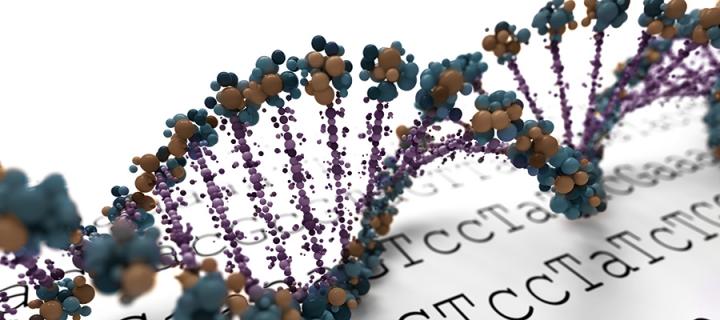Two new genes involved in Aicardi-Goutières syndrome
A publication in Nature Genetics from Prof Yanick Crow’s laboratory has identified two new genes involved in the Mendelian inflammatory disorder Aicardi-Goutières syndrome.

Type 1 interferons are the body's first line of defence against viral infection, orchestrating the antiviral response in infected cells. Interferons are activated by the presence of DNA or RNA of viral origin. A molecule called cGAS is responsible for identifying viral DNA and then triggering a cascade of reactions that result in the expression of type 1 interferons. Importantly, given that our own cells are full of our own DNA, there is a risk of confusing self-derived DNA as ‘viral’. Intriguingly, cGAS has recently been found to be present in the cell nucleus, begging the question as to how the anti-viral sensing machinery is not triggered by nuclear DNA.
Type 1 interferonopathies, including Aicardi-Goutières syndrome (AGS), are hereditary diseases characterized by an overexpression of type 1 interferons. It is thought that the overactivation of type 1 interferon leads to damage of the body’s cells. Prof Yanick Crow and his group have been working on AGS for more than 20 years, previously identifying seven disease-associated genotypes, with these discoveries highlighting novel therapeutic strategies.
Yanick Crow's team, working with HGU colleagues including Nick Gilbert, Martin Reijns and Andrew Jackson, have now identified mutations in either LSM11 or the snRNA U7 to represent new causes of AGS, leading to the activation of cGAS and the excessive production of type 1 interferons. These mutations affect the expression of proteins called histones. Histones ‘coat’ the DNA within the nucleus, and are involved in both the compaction of genomic DNA and its accessibility during gene expression and cell division. Mutations in LSM11 and U7 alter the normal coating of nuclear DNA by histones, and are associated with both a redistribution of cGAS within the nucleus and its activation. Importantly, recently published in vitro work by other researchers has shown that histones are essential to prevent cGAS from recognizing nuclear DNA. The new findings from the Crow group confirm the critical role of histones in preventing autoinflammation in normal human physiology.
This new finding is important in providing families with an explanation for the disease affecting their children. Moreover, our data emphasise the power of studies of rare disease in the dissection of complex human biology – in this case relating to innate immune sensing.
Links
Read the paper in Nature Genetics https://doi.org/10.1038/s41588-020-00737-3
Prof Yanick Crow's Research Group


